기상청 날씨누리 누리집
기상청은 대한민국 정부 기관으로서, 기상 정보 및 유관 정보 관련 서비스를 제공하고 있습니다. 이 중에서 날씨누리 누리집은, 기상청에서 제공하는 날씨 정보를 누구나 쉽게 확인할 수 있는 웹사이트입니다. 이 웹사이트는, 현재 날씨 정보부터 일주일간의 예보, 특정 지역의 날씨 정보, 미세먼지 정보 등 다양한 기상 정보를 제공하고 있습니다.
기상청 날씨누리 누리집의 기능
기상청 날씨누리 누리집은, 다음과 같은 주요 기능을 제공합니다.
– 현재 날씨: 현재 시각의 기온, 습도, 강수량, 바람세기 등을 제공합니다.
– 주간날씨: 일주일간의 일별 날씨 정보를 제공합니다.
– 전국날씨예보: 전국 각 지역의 세부적인 날씨 정보를 제공합니다.
– 전국 주간날씨 예보: 전국 각 지역의 일주일간의 날씨 예보를 제공합니다.
– 내일 전국 날씨: 내일 전국 각 지역의 날씨 예보를 제공합니다.
– 오늘 내일 전국날씨: 오늘과 내일의 전국 각 지역 날씨 예보를 제공합니다.
– 오늘날씨: 오늘의 전국 각 지역의 날씨 정보를 제공합니다.
– 오늘 전국날씨: 오늘의 전국 각 지역의 날씨 예보를 제공합니다.
– 내일 서울 날씨: 내일 서울 지역의 날씨 예보를 제공합니다.
– 미세먼지: 현재 대기 상태 및 미세먼지 예보를 제공합니다.
– 기타 서비스: 해수수온, 일출/일몰, 지진 정보 등 다양한 기상 관련 서비스를 제공합니다.
기상청 날씨누리 누리집 제공하는 정보들
기상청 날씨누리 누리집은, 다양한 기상 관련 정보들을 제공하고 있습니다. 이 정보들은, 대부분 실시간으로 업데이트되며, 다음과 같은 내용들을 포함합니다.
– 기온: 현재, 최저, 최고 기온
– 습도: 현재 습도 및 이슬점 정보
– 강수량: 강수 확률 및 적설량 정보
– 바람: 바람 방향, 바람 세기, 돌풍 정보
– 파고: 바다 상태 정보
– 미세먼지: 대기 상태 정보, 미세먼지 농도, 초미세먼지 농도
– 일출/일몰: 일출, 일몰 시각 및 남은 시간 정보
– 지진: 최근 지진 정보
– 기상특보: 대형 재해, 태풍, 폭염 등에 대한 경고 및 예보 정보
기상청 날씨누리 누리집 애플리케이션
기상청 날씨누리 누리집은, 앱으로도 제공됩니다. 앱은 iOS, 안드로이드, 웹OS 운영체제에서 모두 사용할 수 있습니다. 앱을 다운받으면, 훨씬 더 간편하게 기상 정보를 확인할 수 있습니다. 또한, 앱은 위치 정보 기반으로 사용자에게 맞춤형 날씨 정보를 제공합니다.
기상청 날씨누리 누리집 이용시 유의사항
기상청 날씨누리 누리집을 이용할 때, 다음과 같은 사항들에 유의해야 합니다.
– 인터넷 환경: 기상청 날씨누리 누리집은, 인터넷 연결이 필요한 서비스입니다. 따라서, 인터넷 환경이 좋지 않은 지역에서 이용하려면, 정보 업데이트 속도가 느려질 수 있습니다.
– 정보의 신뢰성: 기상청 날씨누리 누리집은, 기상청에서 제공하는 정보를 기반으로 하고 있습니다. 하지만, 기상 조건은 지역, 시간 등에 따라 변동이 크기 때문에, 정보의 신뢰성에 대해서는 상대적인 검증이 필요합니다.
– 앱 사용 시, 위치 정보 이용에 대한 동의가 필요합니다.
기상청 날씨누리 누리집의 활용 방법
기상청 날씨누리 누리집은, 일상 생활에서 매우 유용하게 활용될 수 있습니다. 다음은, 기상청 날씨누리 누리집을 활용하는 방법 중 일부입니다.
– 외출 전 예보 확인: 매일 외출하기 전에, 날씨누리 누리집에서 해당 지역의 날씨 및 미세먼지 정보를 확인하면, 외출 준비를 미리 할 수 있습니다.
– 여행 계획 세우기: 여행 계획을 세우려면, 해당 지역의 기상 및 날씨 정보를 먼저 확인해야 합니다. 이를 위해, 날씨누리 누리집에서 여행 일정 기간의 일정 시간동안 예보를 확인할 수 있습니다.
– 옷차림 결정: 기온, 습도 등의 날씨 정보를 확인하여, 옷차림을 결정할 수 있습니다. 예를 들어, 맑은 날씨에 얇은 옷을, 비 오는 날에는 우산을 챙기는 등, 날씨에 따라 적절한 준비를 할 수 있습니다.
– 생활에 필요한 기상 정보 확인: 날씨누리 누리집에서 제공되는 기상 정보는, 생활에 필요한 다양한 정보들을 제공합니다. 예를 들어, 미세먼지 정보를 확인하여 마스크를 챙기는 등, 최신 정보를 통해 일상 생활을 더욱 편리하게 관리할 수 있습니다.
FAQs
Q: 어디에서 기상청 날씨누리 누리집에 접속할 수 있나요?
A: 기상청 날씨누리 누리집은, PC나 모바일 기기를 통해 다음 웹사이트에서 접속할 수 있습니다: http://www.weather.go.kr/weather/main.jsp
Q: 기상청 날씨누리 누리집에서 어떤 정보를 확인할 수 있나요?
A: 기상청 날씨누리 누리집에서는, 현재 날씨, 주간 날씨, 전국 날씨 예보, 미세먼지 정보, 일출/일몰 정보, 지진 정보 등 다양한 기상 정보를 확인할 수 있습니다.
Q: 기상청 날씨누리 누리집을 앱으로 다운받을 수 있나요?
A: 예, 기상청 날씨누리 누리집은 앱으로도 제공됩니다. 앱은 iOS, 안드로이드, 웹OS 운영체제에서 모두 사용할 수 있습니다.
Q: 기상청 날씨누리 누리집은 언제 정보를 업데이트하나요?
A: 기상청 날씨누리 누리집은, 대부분 실시간으로 정보를 업데이트합니다. 하지만, 일부 정보들은 해당 지역의 기상상황에 따라 변동이 크기 때문에, 정확도와 신뢰성에 대해서는 검증이 필요합니다.
Q: 기상청 날씨누리 누리집에서 제공하는 정보는 어떻게 활용할 수 있나요?
A: 기상청 날씨누리 누리집에서는, 현재 날씨 확인부터 일주일간의 예보, 특정 지역의 날씨 정보, 미세먼지 정보 등 다양한 기상 정보를 제공합니다. 이 정보들을 활용하여, 일상 생활에서 현재 상황에 맞는 적절한 대처 방법을 결정할 수 있습니다.
사용자가 검색한 키워드: 기상청 날씨누리 누리집 주간날씨, 전국날씨예보, 전국 주간날씨 예보, 내일 전국 날씨, 오늘 내일 전국날씨, 오늘날씨, 오늘 전국날씨, 내일 서울 날씨
Categories: Top 80 기상청 날씨누리 누리집
[내일날씨] 오늘까지 소나기 곳, 내일부터 낮 기온 올라 덥겠음. 6월 15일 17시 기준
오늘 날씨가 몇 도예요?
The weather in Korea varies throughout the year, with hot and humid summers and cold winters. In this article, we will discuss the importance of checking the weather in Korea, the factors that affect the temperature, and the ways people in Korea stay updated on the weather. We will also answer some frequently asked questions about the topic.
Importance of checking the weather in Korea
In Korea, checking the weather is essential due to the unpredictable weather conditions. Korea is located between four different climate zones, which means the weather can change rapidly even in the same day. Depending on where you are in Korea and the time of day, the temperature can fluctuate drastically. It is not uncommon for it to be sunny and warm in the morning and then become cloudy and rainy in the afternoon.
Also, Korea experiences diverse weather phenomena, such as typhoons, heatwaves, and blizzards, which can cause serious damage and affect the daily lives of Koreans. For this reason, the Korean Meteorological Administration (KMA) issues weather forecasts, warnings, and advisories to inform the public about any potential risks and hazards. Checking the weather forecast before going out is important to ensure your safety and wellbeing.
Factors that affect the temperature
The temperature in Korea is influenced by various factors, including location, altitude, season, and weather phenomena. Generally, the temperature is higher in southern regions and lower in northern regions due to the difference in latitude. The temperature also decreases with altitude, so regions in the mountains tend to be colder than those in the lowlands. In addition, the four seasons in Korea have distinct temperature ranges, with summer being the hottest and winter being the coldest. Weather phenomena such as typhoons, hot or cold waves, and smog can also affect the temperature.
Ways people stay updated on the weather
In Korea, there are several ways people stay updated on the weather. One of the most popular methods is to check weather apps or websites on their smartphones or computers. The KMA provides an official weather app called ‘Amber Weather’ that offers real-time updates on the weather, including temperature, humidity, wind speed, and precipitation. Other popular weather apps include ‘AccuWeather,’ ‘Weather Channel,’ and ‘Yahoo Weather’. These apps offer detailed weather forecasts with interactive maps and charts.
Also, people in Korea watch weather forecasts on TV news programs or listen to them on the radio. Weather forecasts are usually aired several times a day, and they provide information on temperature, humidity, wind speed and direction, and weather conditions. The KMA operates a 24-hour weather channel called ‘Weather Plaza,’ which broadcasts weather forecasts, typhoon alerts, and other weather-related information.
In addition to these methods, some Koreans still rely on traditional methods to predict the weather. For example, they observe the behavior of animals such as birds, ants, and fish. They believe that the behavior of these animals can indicate changes in the weather. Some also use old-fashioned weather instruments, such as barometers, thermometers, and wind vanes, to measure atmospheric pressure, temperature, and wind direction.
FAQs
Q: What is the average temperature in Korea?
A: The average temperature in Korea varies depending on the season. In summer (June-August), the average temperature ranges from 23°C to 30°C (73°F to 86°F), while in winter (December-February), it ranges from -6°C to 7°C (21°F to 45°F). In spring and fall, the average temperature is around 15°C to 20°C (59°F to 68°F).
Q: What are the hottest and coldest regions in Korea?
A: The hottest region in Korea is Jeju Island, located in the southern part of the country. The average temperature in Jeju Island in July is around 28°C (82°F). The coldest region in Korea is Mount Paektu, located in the northeast corner of the country. The temperature can drop to -30°C (-22°F) in winter.
Q: How does the weather affect tourism in Korea?
A: The weather plays a significant role in tourism in Korea. Many tourists visit Korea during the spring and fall seasons because of the pleasant weather and beautiful scenery. However, the summer season, which is the peak season for tourism, can be hot and humid, while the winter season can be bitterly cold. The number of tourists visiting Korea is also affected by weather phenomena such as typhoons and heavy snowfalls.
Q: Are there any particular customs or traditions related to the weather in Korea?
A: Yes, there are several customs and traditions related to the weather in Korea. For example, in the traditional lunar calendar, there are 24 seasonal divisions, each corresponding to a particular weather phenomenon. Koreans celebrate the start of each season with various traditional festivities and rituals. Also, many Koreans believe that certain foods or drinks, such as samgyetang (ginseng chicken soup) or sikhye (sweet rice drink), can help them cope with hot or cold weather.
Conclusion
In Korea, knowing the temperature is not just a practical matter, but it is also a cultural phenomenon. Given the diverse weather conditions in Korea, checking the weather regularly is essential to stay safe and make the most of your day. Whether you use modern weather apps or traditional methods, staying informed about the temperature and weather conditions is crucial. We hope this article has provided you with useful information about the temperature in Korea and how it affects daily life in the country.
오늘 몇 도인지 알려 줘?
Temperature measurement in Korea
Before we go into the details of temperature measurement and its importance in Korea, it is necessary to understand the temperature measurement system used in Korea. Korea uses Celsius as a measurement unit for temperature, which is commonly used in most countries except for the United States. Celsius is a widely accepted measurement system for temperature because it is based on the freezing and boiling points of water, which is a universal substance.
In Korea, temperature is measured in various ways. The most common method is to use a thermometer, which can be found in many public places such as schools, hospitals, government offices, and on the street. These thermometers are usually easy to read and provide accurate measurement. Another way is to check the temperature on TV news channels or through weather apps on smartphones.
Importance of temperature in daily life
Temperature is important in daily life because it affects human comfort, health, and safety. Extreme temperatures can cause heatstroke, hypothermia, and other health-related problems. Therefore, it is essential to know the temperature to take necessary precautions such as drinking enough water, wearing appropriate clothes, and staying indoors during extreme weather conditions.
Moreover, temperature affects transportation, agriculture, and other industries. In Korea, public transportation is widely used, and it can be delayed or canceled due to extreme weather conditions such as heavy snow or rain. Farmers need to know the temperature to decide when to plant or harvest crops and to prevent crop damage caused by frost or heat. In addition, weather plays a significant role in the tourism industry, and many people travel to Korea during the summer or winter seasons to enjoy outdoor activities, beaches, and ski resorts.
Finally, knowing the temperature can help people to plan their day effectively. For example, people may plan to have a picnic or a BBQ with friends on a sunny day, or visit a museum or a cafe on a rainy day. It can also help people to plan their trip, either to stay inside or go outside to enjoy the weather.
FAQs
Q: What is the average temperature in Korea?
A: The average temperature in Korea is around 10-20°C (50-68°F), with the coldest months being December to February and the warmest months being June to August.
Q: Why is temperature measurement important in Korea?
A: Temperature measurement is important in Korea because it affects human comfort, health, and safety. Extreme temperatures can cause heatstroke, hypothermia, and other health-related problems. Moreover, temperature affects transportation, agriculture, and other industries. Finally, knowing the temperature can help people to plan their day effectively.
Q: How can I check the temperature in Korea?
A: There are various ways to check the temperature in Korea. You can use a thermometer, check TV news channels, or use weather apps on your smartphone.
Q: Is Celsius used as a temperature measurement unit in Korea?
A: Yes, Celsius is commonly used as a temperature measurement unit in Korea.
Q: What is the temperature range in Korea?
A: The temperature range in Korea varies depending on the season. It can range from -20°C to 40°C (-4°F to 104°F), with the coldest months being December to February and the warmest months being June to August.
Q: What precautions should I take during extreme weather conditions in Korea?
A: During extreme weather conditions, it is essential to take necessary precautions such as drinking enough water, wearing appropriate clothes, and staying indoors. For example, during a heatwave, it is important to stay hydrated and avoid direct sunlight. During a cold wave, it is important to wear warm clothes and stay indoors as much as possible.
Conclusion
In conclusion, “오늘 몇 도인지 알려 줘?” is one of the most important and common questions in Korea. Knowing the temperature is essential in daily life because it affects human comfort, health, and safety, as well as transportation, agriculture, and other industries. Korea uses Celsius as a temperature measurement system, and it can be checked through various methods such as thermometers, TV news channels, and weather apps. Finally, it is essential to take necessary precautions during extreme weather conditions to avoid health-related problems and stay safe.
여기에서 자세히 보기: future-user.com
주간날씨
Factors affecting 주간날씨
Various factors affect 주간날씨, including temperature, humidity, wind, and precipitation. The temperature is determined by the amount of heat energy from the sun that reaches the Earth’s surface, which is affected by latitude, altitude, and cloud cover. The humidity refers to the amount of water vapor in the air, which affects how comfortable or uncomfortable the weather feels. Wind speed and direction can impact the temperature and the potential for precipitation. Finally, precipitation, including rain, snow, and sleet, can drastically affect outdoor activities, road safety, and food production.
Another important factor that influences 주간날씨 is the location of the Korean Peninsula. South Korea is situated in a temperate climate that experiences four distinct seasons: spring, summer, fall, and winter. This climate is characterized by warm, wet summers, and cold, dry winters. However, the topography of the region also affects the weather. For example, the eastern coast is drier than the west coast due to the mountain range that shields the east from the prevailing winds, while the western coast receives more precipitation. Moreover, the Korean Peninsula is located in a volatile area, where typhoons, monsoons, and other extreme weather events are common.
Predicting 주간날씨
To provide reliable forecasts of 주간날씨, the Korean Meteorological Administration (KMA) operates a national network of weather stations. These stations collect data on temperature, humidity, wind speed and direction, and precipitation, which are then analyzed by meteorologists. Additionally, the KMA uses advanced computer models to predict upcoming weather patterns.
This process involves identifying different pressure systems, such as high and low-pressure systems, that cause weather changes. High-pressure systems are generally associated with clear skies and dry conditions, while low-pressure systems often bring rain and wind. Meteorologists also analyze the movement of these systems and the impact they have on the surrounding atmosphere.
Despite the many technological advances used in predicting 주간날씨, it remains a challenging task, especially with the unpredictability of extreme weather events such as typhoons and hurricanes. Therefore, it is important to remain vigilant and prepare accordingly.
Precautions during extreme weather events
Extreme weather can occur at any time, and it is crucial to take precautions to minimize risks to people and property. The following are some guidelines that people should follow during various weather events:
– Typhoons: Typhoons are a common phenomenon in South Korea, especially during the summer and fall seasons. These storms can bring strong winds, heavy rain, and flooding, so it is important to be prepared. It is recommended to secure all loose items outside, such as outdoor furniture and umbrellas. If evacuation is ordered, follow the instructions of local authorities and seek shelter in a safe location.
– Heavy rain: If heavy rain is predicted, it is important to take precautions to avoid flooding. Clear gutters and drains to prevent water from accumulating around your home. If the water level rises quickly, move to higher ground and avoid crossing flooded roads or bridges.
– Heatwaves: Heatwaves can be dangerous, especially for young children, the elderly, and people with preexisting medical conditions. It is essential to stay hydrated by drinking plenty of water, avoid direct sunlight during the hottest part of the day, and wear loose, light-colored clothing. Additionally, check on neighbors who may be vulnerable during a heatwave.
FAQs:
Q: What is the temperature range for different seasons in South Korea?
A: South Korea has a temperate climate characterized by four distinct seasons. During the winter season (December to February), temperatures can range from -5°C to 5°C. The spring season (March to May) has temperatures ranging from 10°C to 20°C, and during the summer season (June to August), temperatures can range from 20°C to 30°C. Finally, the fall season (September to November) has temperatures ranging from 10°C to 20°C.
Q: Which part of South Korea receives the most rainfall?
A: The western coast of South Korea receives the most rainfall due to the region’s terrain and proximity to the Yellow Sea. The area also experiences typhoons and monsoons, which bring heavy rainfall during the summer and fall seasons.
Q: What is a typhoon, and how is it different from a hurricane?
A: A typhoon and a hurricane are the same weather phenomenon, but they have different names depending on their location. Typhoons occur in the western Pacific Ocean, while hurricanes occur in the Atlantic Ocean and eastern Pacific Ocean.
Q: Can extreme weather events be predicted accurately?
A: While significant advances in technology have improved weather forecasting, predicting the detailed characteristics of a weather pattern is still challenging. Extreme weather events like hurricanes or typhoons can be especially difficult to predict. However, weather forecasting is getting more accurate over the years due to technological advancements and better computer models.
Q: What should I do during a lightning storm?
A: During a lightning storm, avoid standing under trees or other tall objects that attract lightning. If you are outdoors, find a low-lying area away from trees and water. Do not take shelter under a metal structure such as a tall fence, as it can attract lightning. If you are indoors, stay inside and avoid using electronic equipment that is plugged in.
전국날씨예보
날씨는 인간 생활에 중요한 영향을 미치는 요소 중 하나입니다. 그러므로, 전국날씨예보는 사람들이 일상생활을 계획하고 안전한 환경을 유지하기 위해 필요한 정보입니다. 이번 기사에서는 전국날씨예보에 대해 종합적으로 알아보겠습니다.
1. 전국날씨예보란?
전국날씨예보는 기상청에서 발표하는 전국적으로 적용되는 날씨 예보입니다. 매일 아침과 저녁에 발표가 되며, 이는 대한민국의 모든 지역을 대상으로 합니다. 예보는 기온, 강수, 바람, 습도 등의 날씨 요소를 예측하여 발표됩니다.
2. 날씨예보의 종류
전국날씨예보에는 다양한 종류가 있습니다. 가장 일반적인 것은 일기예보입니다. 이는 하루 내 내일까지의 전국적인 날씨 예보를 제공합니다. 또한, 기상특보는 재난상황 등급에 따라 발표됩니다. 태풍, 폭풍, 대설 등과 같은 재난상황에 대한 정보를 제공하는 특수한 예보이며, 신속하고 정확한 정보제공이 중요합니다.
3. 전국날씨예보의 시기
대부분의 경우, 전국날씨예보는 하루 전에 발표됩니다. 하지만, 기상조건이 매우 불안정하거나 세부 지역의 특수한 기상 조건이 있는 경우, 예보는 하루 이내에 업데이트될 수 있습니다. 추가로, 습도, 기압, 바람세기 등의 요소가 계절별로 크게 변화하므로, 겨울과 여름철의 예보는 다를 수 있습니다.
4. 전국날씨예보를 활용하는 방법
전국날씨예보는 일상 생활에 매우 유용한 정보입니다. 예보를 통해, 오늘 하루 동안 거기에 맞는 복장을 착용하거나, 우산을 챙기는 등의 준비를 할 수 있습니다. 또한, 예상되는 강수량과 바람의 세기를 고려하여 출퇴근 방법을 조정하거나, 놀이공원이나 캠핑한등의 야외활동을 결정할 수 있습니다.
5. 전국날씨예보의 정확도
전국날씨예보의 정확도는 과연 어느정도인지 궁금증을 느끼실거라 생각됩니다. 전국날씨예보는 기상관측소와 기상위성을 활용해서 수집된 정보로 제공됩니다. 그러므로, 예보의 정확도는 기상 장비와 수집된 데이터의 정확성에 따라 달라집니다. 또한, 예상한 기상 조건이 실제 발생하는 기상 조건과 다를 수 있기 때문에, 완전한 정확도를 기대하기는 어렵습니다. 그러나, 기상청은 최선의 노력을 다해 가능한한 정확한 예보를 제공하기 위해 지속적으로 연구와 개선을 진행 중입니다.
6. 한국의 기상 조건
한국은 대체로 강수량과 습도가 높은 기후에서 살고 있습니다. 특히 여름에는 높은 온도와 습도로 인해 불쾌감이 높아지기도 합니다. 겨울은 날씨가 건조하고 바람이 강해지는 경우가 많으며, 대한민국의 지리적 위치상 실내와 실외 간 온도차가 크기 때문에 외출 시 옷차림을 잘 고려해야 합니다.
FAQs
Q1: 전국날씨예보의 발표 시간은 언제인가요?
A1: 전국날씨예보는 기상청이 매일 아침과 저녁에 발표합니다.
Q2: 전국날씨예보의 예보기간은 어떻게 되나요?
A2: 전국날씨예보의 예보기간은 대체로 하루 내내 내일까지입니다.
Q3: 전국날씨예보는 리얼타임으로 되나요?
A3: 기상자료개방포털에서는 최소 1시간 단위로 갱신되는 기상예보 API를 제공하기 때문에 리얼타임에 가깝습니다.
Q4: 전국날씨예보는 어떤 정보를 제공하나요?
A4: 전국날씨예보는 기온, 강수, 바람, 습도 등의 날씨 요소를 예측하여 제공합니다.
Q5: 대한민국의 날씨는 어떻게 될까요?
A5: 대한민국은 강수량과 습도가 높은 기후를 가지고 있으며, 특히 여름에 불쾌감이 높아지는 경향이 있습니다. 겨울은 날씨가 건조하고 바람이 강해지는 경우가 있습니다.
Q6: 전국날씨예보의 정확도는 어느 정도인가요?
A6: 전국날씨예보는 기상 장비와 수집된 데이터의 정확성에 따라 달라집니다. 예상한 기상 조건이 실제 발생하는 기상 조건과 다를 수 있기 때문에, 완전한 정확도를 기대하기는 어렵습니다.
Q7: 전국날씨예보를 활용하는 방법은 무엇인가요?
A7: 전국날씨예보를 활용해 오늘 하루 동안 거기에 맞는 복장을 착용하거나, 우산을 챙기는 등의 준비를 할 수 있습니다. 또한, 예상되는 강수량과 바람의 세기를 고려하여 출퇴근 방법을 조정하거나, 놀이공원이나 캠핑 등의 야외활동을 결정할 수 있습니다.
Q8: 전국날씨예보는 유료인가요?
A8: 전국날씨예보는 대한민국의 기상청에서 무료로 제공됩니다.
Q9: 전국날씨예보를 어디에서 확인하나요?
A9: 전국날씨예보는 대한민국의 기상청 홈페이지나 다양한 메신저 애플리케이션, 일반적으로 쓰이는 포털 사이트 등에서 확인할 수 있습니다.
Q10: 전국날씨예보 이외의 날씨 정보는 어떤 것이 있나요?
A10: 전국날씨예보 이외에도, 지역별/시간별 예보, 홈페이지를 통한 고객 문의서비스, 생활 기상정보 등의 측면에서 다양한 날씨 정보가 제공됩니다.
정확한 정보와 준비가 그리우지 않길! 전국날씨예보를 꼭 이용하세요.
주제와 관련된 이미지 기상청 날씨누리 누리집
![[내일날씨] 오늘까지 소나기 곳, 내일부터 낮 기온 올라 덥겠음. 6월 15일 17시 기준 [내일날씨] 오늘까지 소나기 곳, 내일부터 낮 기온 올라 덥겠음. 6월 15일 17시 기준](https://rausachgiasi.com/wp-content/uploads/2023/06/hqdefault-1014.jpg)
기상청 날씨누리 누리집 주제와 관련된 이미지 14개를 찾았습니다.










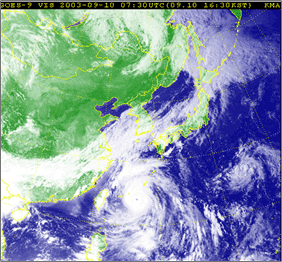

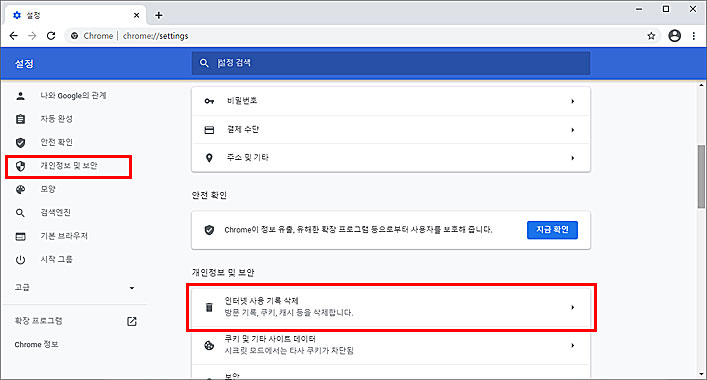

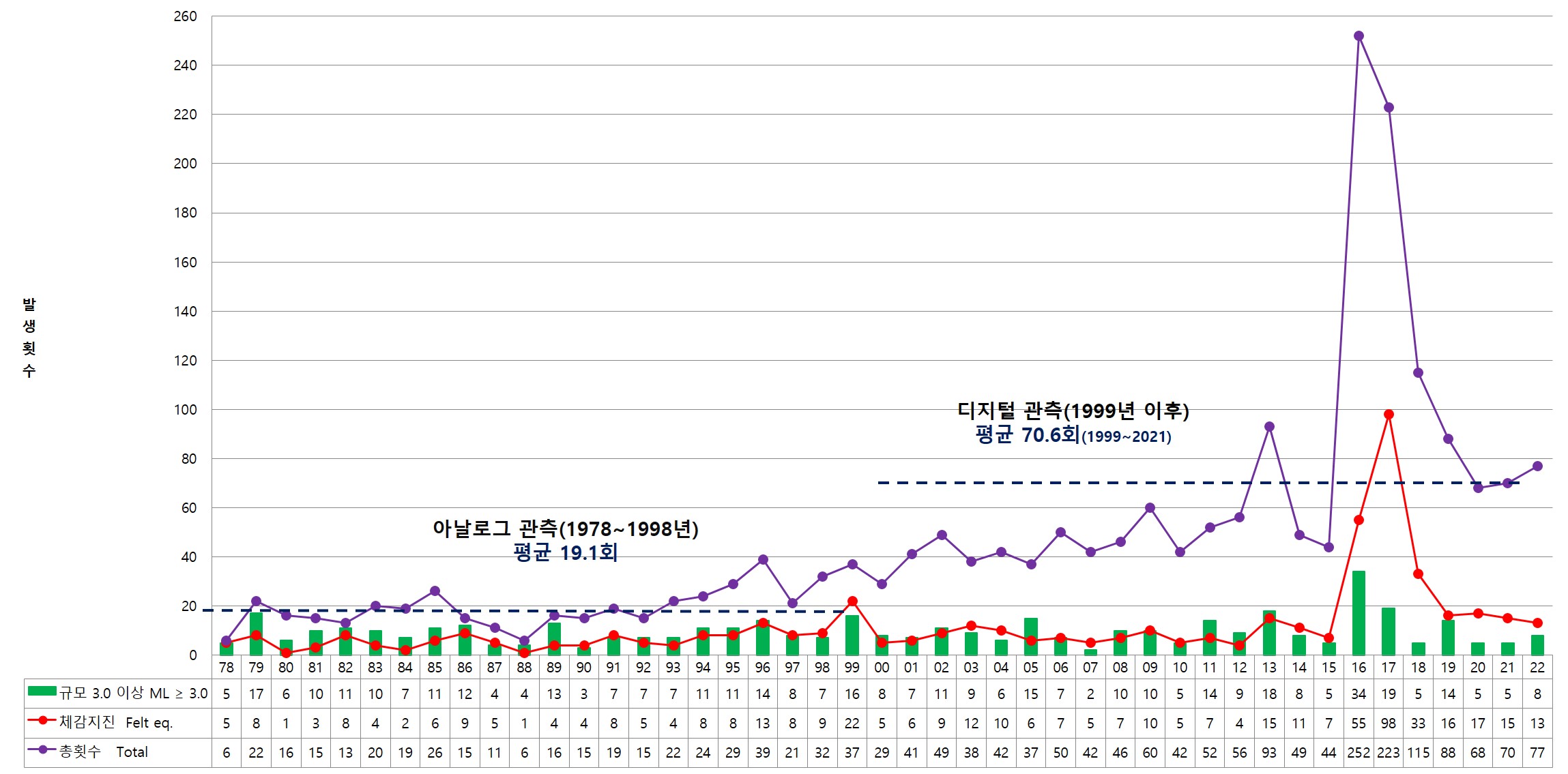
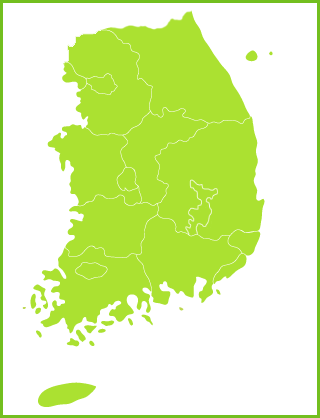


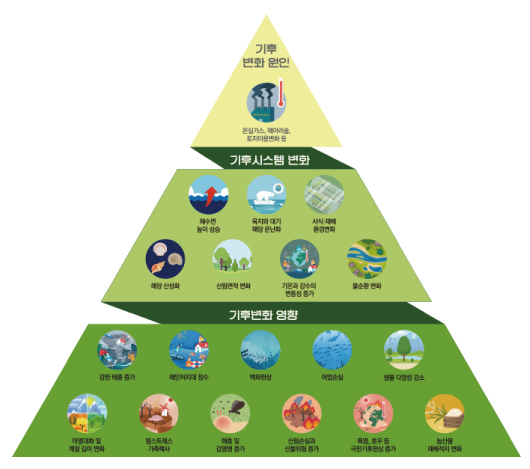









![오늘 날씨] '수능일' 전국 대부분 아침 0~5도…한파 없지만 쌀쌀해 - 머니투데이 오늘 날씨] '수능일' 전국 대부분 아침 0~5도…한파 없지만 쌀쌀해 - 머니투데이](https://thumb.mt.co.kr/06/2022/11/2022111617410438792_1.jpg)

Article link: 기상청 날씨누리 누리집.
주제에 대해 자세히 알아보기 기상청 날씨누리 누리집.
- 기상청 날씨누리: 홈
- 단기예보 – 기상청 날씨누리
- 현재 날씨 – 기상청 날씨누리
- 지수안내 – 생활기상지수 – 테마날씨 – 기상청 날씨누리
- 서울·인천·경기 – 단기예보 – 기상청 날씨누리
- 날씨 레이더 영상 – Korea
- 기상청 날씨누리 www.weather.go.kr – 소프트웨어 세상 – 티스토리
더보기: future-user.com/wki